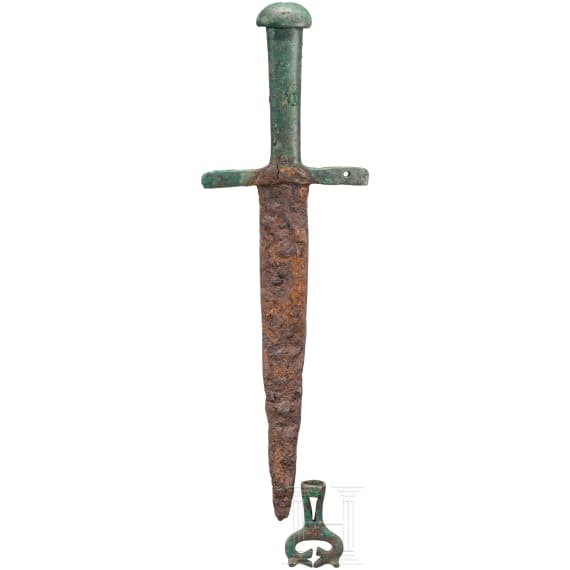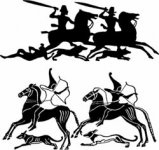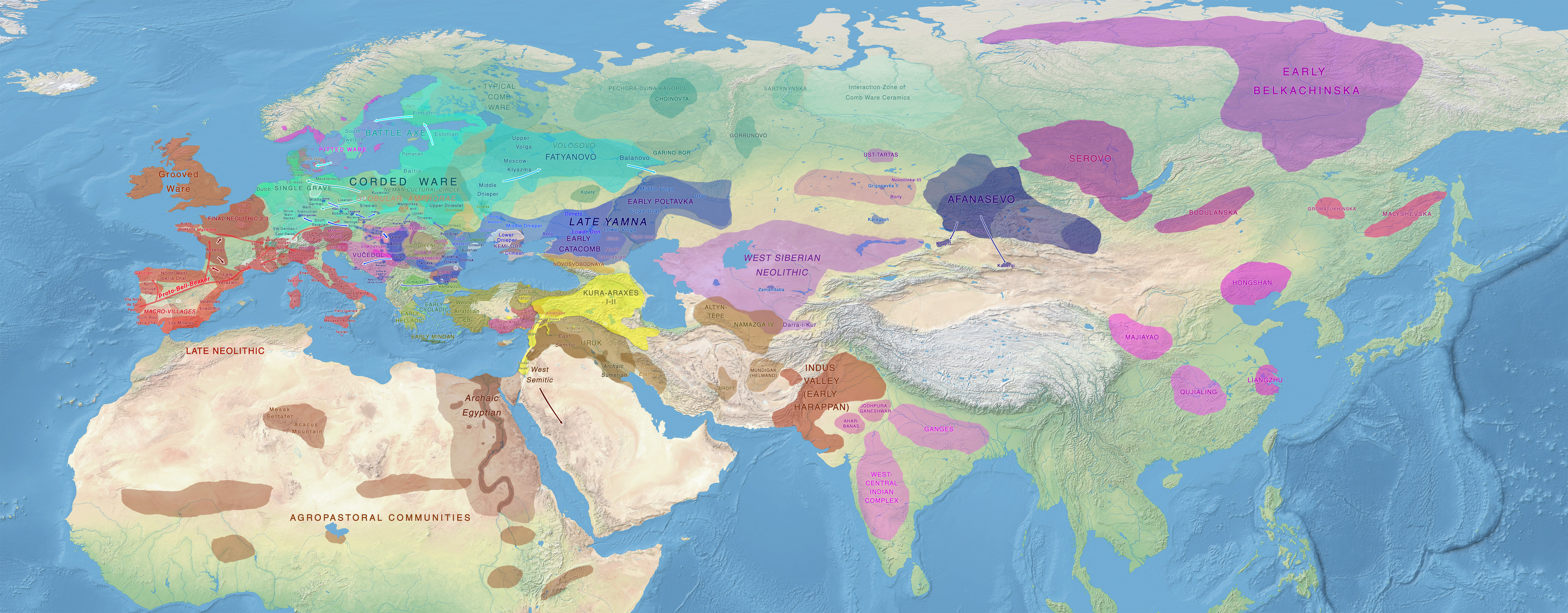By the middle of the Bronze age, Maliq IIIc and Neziri cultures reveal many common elements. (Ceka, N.,Iliret, p.35) By the end of Broze Age, Maliq IIId shows wares to be decorated with geometric motives over a lustrous brown background. The motifs follow the earlier linear geometric style, naturally enriched by new motifs and more complex designs. The pottery painted before firing links Maliq IIId3 firmly with western Macedonia, represented by Boubousti, and equally with the Late Bronze Age painted pottery of central Macedonia. Frano Prendi saw a similarity in painted pottery found in Epirus with that of Maliq.N. L. G. Hammond wrote about Maliq and pointed to the autochthonous origin of the pottery painting, indicating that the “painted pottery like that of Maliq III d3 has been known in Epirus, but opinions vary as to when it first appeared in north-west Greece. We do not know of any site outside the Korce basin which has this pottery painted after firing and is of autochthonous origin, as it is at Maliq. Further, it is only at Maliq that we see the origins of this style. (N. L. G. Hammond indicated that the tumulus at Pazhok has dating that corresponds to Middle Helladic period. (The Cambridge Ancient History, Volume III, Part 1, 2008, p. 222)
A study done by Barbara Horejs indicates that a total of eight different stylistic groups in Late Bronze Age mattpainted pottery have been discerned north of Central Greece. It is indicated that all these centers have a local tradition in mattpainted pottery with clear links to older prototypes. (Barbara, Horejs, Phenomenon of Mettapainted pottery in Northern Aegean, 2007)
This pottery has been named devollite. It originated and flourished at the basin of River Devoll. During the Iron Age, this pottery characterized the whole of southern Illyrian areas. It is this pottery that is considered to provide a direct link between the Bronze Age population and the historical time population known as Illyrian. (Ceka, N., Iliret, p. 36) The area has also shown a similarity in the construction of fortifications, which became characteristic during the later Bronze Age. This construction is characterized by the placement of multi walls, use of confining tumuli, and leaving a wall encircled open space at the entrance. These construction elements could be seen In Borsh, QeparoLleshan, Tren and as far as Glasinac (Verecevo, Stipanic, Zagrovoc) and Liburnia (Budin, Oton, Dusar). (Ceka, N., Iliret, p. 36)
According to the Albanian archaeologists, these common cultural similarities indicate formation of an ethnicity with specific cultural attributes that had taken shape during the Middle Bronze period. This was the result of a reality in which life from the Neolithic period had continued uninterrupted in the development of a distinct culture. The introduction of pastoral economy, as well as economic advances, associated with changes in means of production, must have been prime contributors in the integration of the population. The new economy would have necessitated a breakdown of the existing tribal structures.
The next sizable population movement took place at the end of the second millennium B.C., which some have called Doric invasion, some others Illyrian invasion, and others have used other names. The invaders were a group of people that are identified to have brought urnfield culture south. Krahe (1955) had indicated that the Illyrians were the bearers of this culture which had developed by the fusion of the Danubian Yamnaya cultures. Elements of this civilization, reached Albania towards the end of the Bronze Age. (The Cambridge Ancient History, Volume III, Part 1, 2008, p. 228) The well known Albanian archeologist Frano Prendi summarized the evidence and the scope of impact of settlemets at the end of Bronze Age that Albanian territories had faced.
In this transitional period which was to last some three centuries with each century providing new elements in its material culture, several components are discernible: the autochthonous tradition, elements of sub-Mycenaean and Proto-Geometric civilization, and elements of Cental European origin which were spread through Albania by the second wave of the Pannono-Balkan migration (end of the twelfth and the eleventh centuries B.C.). This wave, unlike the first, had a marked influence on Albania, although only in some areas.
Of the number of cultural objects which spread from the north in all directions, there are swords with a tongue-shaped hilt (see Plates Vol.), flame-shaped spear-heads and socketed axes, which become fairly common in this period, and also pins with conical or vase-shaped heads (Vasenkopfnadeln), simple arched fibulae with or without buttons, whose origin, in all likelihood, is from the Liburno-Dalmatian coast, and so on. The earliest examples of this type with its many variants are recorded so far in the regions bordering southern Albania, as for example, at Dukat in Vlore, and are completely absent in the interior, as far as we know. This phenomenon suggests a purely maritime circulation of these eleventh and tenth century fibulae via the Adriatic.
In spite of the special influence of the Urnfield civilization which played an important role in the enrichment of the Early Iron Age civilization in Albania, especially in the south, one must emphasize that it did not impose any essential difference on the autochthonous foundation of Albanian civilization, and even less on the ethnic structure of the population. This can be seen most clearly in the uninterrupted practice of burial rites in tumuli, the customary inhumation in the Illyrian manner being in the contracted position. The small number of urn-burials, for instance in the Bare tumuli, can be associated with the influence of the second wave of the Pannono- Balkan migration in Albania, but the objects found in them are with a few exceptions typically Illyrian objects. The pottery particularly is derived without stylistic modifications from the Late Bronze Age. Thus, for example, in the Korce basin and the adjoining areas, the pottery of the first era of the Iron Age is almost identical in technique, shape and decoration with the Late Bronze Age painted pottery of Maliq, so that it is often difficult to distinguish between them. This is an important factor in demonstrating the continuity of the tradition of the’ Devollian’ pottery from the Late Bronze Age period into the Early Iron Age and even down to the sixth century B.C.
http://old.njekomb.com/?p=111640





